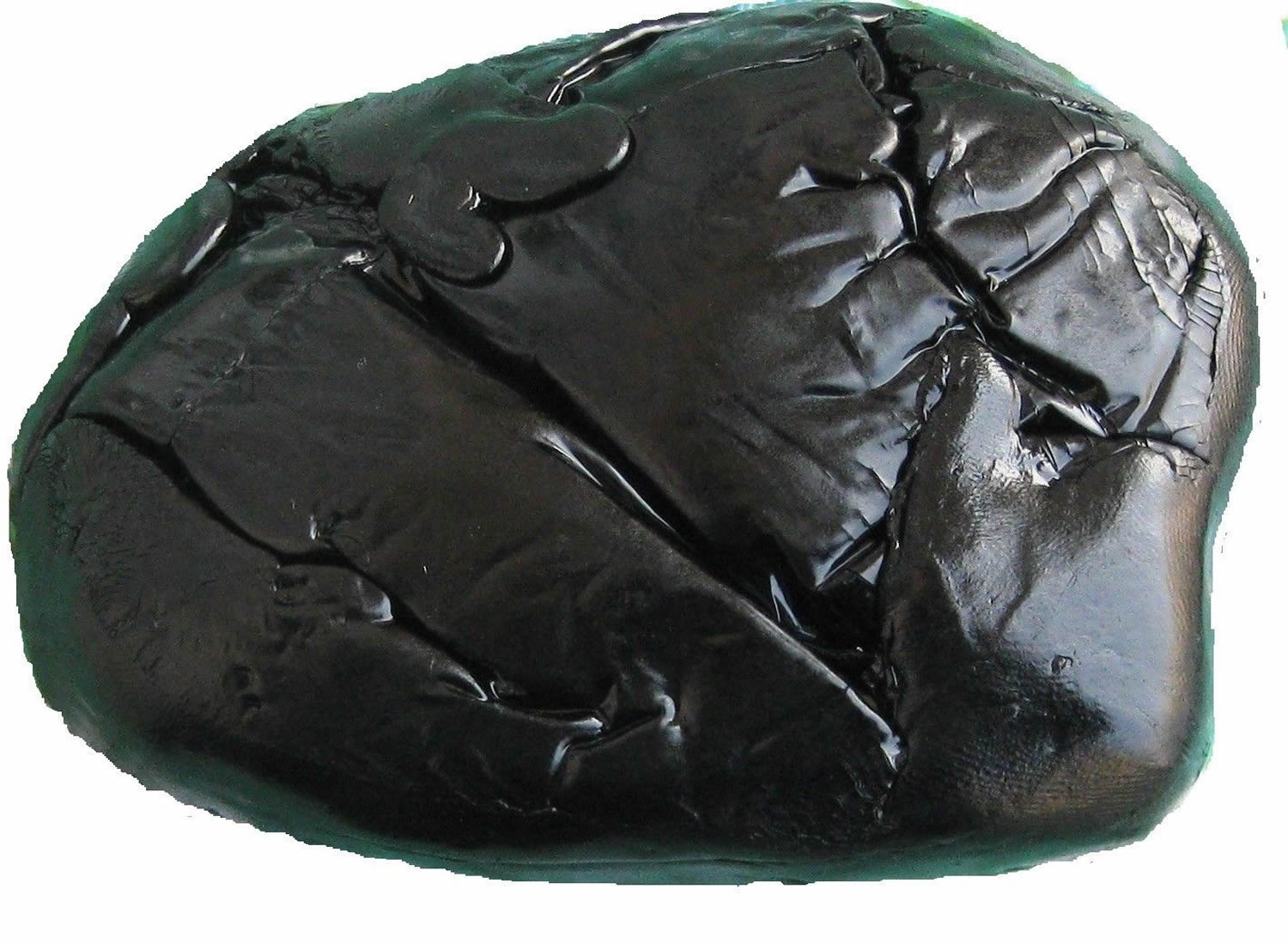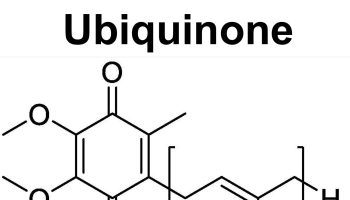What is shilajit
Shilajit also known as mumijo, mumie and momia, is a pale‐brown to blackish‐brown exudation (asphaltum) of variable consistency, exuding from layers of rocks as they become warm in the summer months in many mountain ranges of the world, especially the Himalayas and Hindukush ranges of the Indian subcontinent 1. Shilajit is derived from long-term humification of Euphorbia and Trifolium (clover) plants 2. Common people describe it from their knowledge as pahar‐ki‐pasina (sweat of mountains), paharki‐khoon (mountain blood), shilaras (rock juice), asphalt, bitumen, etc 3. Shilajit is composed of rock humus, rock minerals and organic substances that have been compressed by layers of rock mixed with marine organisms and microbial metabolites 4. Shilajit has been found to consist of a complex mixture of organic humic substances and plant and microbial metabolites occurring in the rock rhizospheres of its natural habitat 1. A derivative of Shilajit, fulvic acid complex, consists of naturally occurring low- and medium-molecular-weight compounds, including oxygenated dibenzo-alpha-pyrones and acylated dibenzo-alpha-pyrones 5. It is believed dibenzo-alpha-pyrone, fulvic acid and their derivatives are the principal constituents of Shilajit contributing to these effects 6. The fulvic acid stimulates blood formation, energy production, and prevents cold exposure and hypoxia 7. Fulvic acid actively takes part in the transportation of nutrients into deep tissues and helps to overcome tiredness, lethargy, and chronic fatigue 7. It also works effectively as a tonic for cardiac, gastric, and nervous systems, adaptogen and antistress agent 8.
Shilajit has been used as a rejuvenator and an adaptogen for thousands of years, in one form or another, as part of traditional systems of medicine in a number of countries. Shilajit is widely used in the preparation of Ayurvedic medicines and is regarded as one of the most important ingredients in Ayurvedic system of medicine, the traditional Indian system of medicine 9. Shilajit is used as an adaptogen 10.
Early Ayurvedic writings from the Charaka Samhita 11 describe Shilajit as a cure for all diseases as well as a Rasayana (rejuvenator) that promises to increase longevity.
Traditional uses of Shilajit primarily focus not only on diabetes and diseases of the urinary tract, but also on edema, tumors, muscle wasting, epilepsy and even insanity 3. Modern indications extend to all systems of the human body with a significant number of additions in the reproductive and nervous system 12.
Several toxicological studies, both acute and subchronic, have already been performed on Shilajit throughout the world. Oral LD50 (lethal dose 50 where 50% of the test subjects die) was found to be >2000 mg/kg 13 and Shilajit was proved to be safe at doses of 0.2–1.0 g per kg body weight when used chronically 14. Clinical evaluation of spermatogenic activity of processed shilajit in oligospermia 15 revealed that there was no alteration on objective features related to any systemic toxicities such as serum urea, uric acid, serum bilirubin, total protein, serum globulin, alanine aminotransferase (ALT), aspartate aminotransferase (AST) and alkaline phosphatase (ALP) 15. Besides, it was also observed that there was a significant improvement in semen volume (+37.6%), total sperm count (+61.4%), motility (12.4–17.4% after different time intervals), normal sperm count (+18.9%) and total testosterone (+23.5%) with concomitant decrease in pus and epithelial cell count compared with baseline value in 28 patients of oligospermia after 90 days of treatment with purified shilajit at a dose of 100 mg twice daily 16. An unpublished human safety study of purified Shilajit from Natreon, Inc., New Brunswick, NJ, USA by the present authors has demonstrated the safety of this product at 250 mg twice a day dosing 16 and an unpublished animal study in rats with 100 mg/kg body weight (equivalent to human dose of 850 mg) by Natreon showed a significant increase in testosterone levels 16. Processed Shilajit containing biologically active component di‐benzo‐alpha‐pyrone is earlier reported to increase the spermatogenic activity in selected patients of oligospermia 15.
Figure 1. Shilajit (asphaltum)
Shilajit traditional medicine uses
Shilajit is an Ayurvedic drug with a long history of human use and has been used in nervous, diabetic, urinary, immune, cardiac, and digestive disorders, and is also used as a performance enhancer 17. Traditionally, it has been recommended for the cure of almost all kinds of human diseases. Shilajit other uses are as a lithotriptic (an agent that effects the dissolution of a calculus), antiseptic 18, analgesic, anti asthmatic agent 19, and in the treatment of AIDS 20, parasitic infections 18, chronic fever, jaundice 21, obesity 22, sexual disorders 23, and thyroid disorders 24. Astanga Hradaya also states that it is the best rejuvenator 22. Ancient works such as the Hindu Materia Medica, Charaka Samhita, and Susruta Samhita also describe the medicinal properties of Shilajit.
Shilajit can be very useful in the treatment of high-altitude cerebral edema-like conditions of the brain as it maintains the extracellular volume in the body through its diuretic action, and removes the excess fluid and toxins from the brain as well as the body 18. It improves memory and enhances confidence for better handling of stress 25; it also has very good antioxidant properties 8.
Shilajit may play a potential role in the treatment of Alzheimer’s and Parkinson’s diseases 26 as it is an immunostimulant and has been found to be very effective in treating immune, nervous, and urinary disorders 26. Jaiswal et al. 27 revealed its anxiolytic activity and its usefulness in the treatment of disinclination to work. Shilajit is also used as a tonic in the ayurvedic system of medicine due to the presence of humic acid, fulvic acid, coumarins, and triterpenes 18.
Shilajit benefits
Eastern European weightlifters have been using Shilajit as part of an “herbal anabolic stack” to promote better strength, recovery, and muscular hypertrophy 28. Traditional Ayurvedic use of shilajit as a tonic has some support from studies of the humic acids, fulvic acids, coumarins, and triterpenes that have shown antistress effects in animals 2. However, human data on this and other adaptogenic herbs are sorely lacking. Therefore, based on current clinical studies, shilajit has not been shown to be of any benefit for any human conditions.
Because consumers have access to a wide variety of herbal dietary supplements, future studies would be most pertinent if they would focus on outcomes important to male and female consumers.
Shilajit dosage
250 mg of oral Shilajit supplementation twice daily has been used in some clinical trials 29, 16.
Another study recommended dose of Shilajit for maintenance of optimal health is 300-500 mg/day 30. Shilajit is slowly metabolized and reaches a maximum level in the blood after 12-14 hours of consumption 30.
Shilajit side effects
Shilajit is safe and has been found to be quite safe for up to 3 g/kg body weight in mice 31. Shilajit should not be used with horse gram, meat of pigeon, Solanum nigrum (black nightshade) 32, 22. Raw and unprocessed Shilajit should not be used as it contains a significant amount of free radicals and has been found to be contaminated with different fungal organisms such as Aspergillus niger, A. ochraceous, and Trichothecium roseum 33.
- Shilajit: a review. Phytotherapy Research 13 February 2007. https://doi.org/10.1002/ptr.2100[↩][↩]
- Ghosal S, Singh SK, Kumar Y, et al. Anti-ulcerogenic activity of fulvic acids and 4′-methoxy-6-carbomethoxybiphenyl isolated from Shilajit. Phytother Res 1988;2:187–91.[↩][↩]
- Clinical evaluation of purified Shilajit on testosterone levels in healthy volunteers. Andrologia 22 September 2015. https://doi.org/10.1111/and.12482[↩][↩]
- Ghosal S (1994) The aroma principles of Gomutra and Karpuragandha Shilajit. Indian J Indg Med 11:11–14.[↩]
- Shilajit: A panacea for high-altitude problems. Meena H, Pandey HK, Arya MC, Ahmed Z. Int J Ayurveda Res. 2010 Jan; 1(1):37-40. https://www.ncbi.nlm.nih.gov/pmc/articles/PMC2876922/[↩]
- Stohs SJ: Safety and efficacy of shilajit (mumie, moomiyo). Phytother Res 2014;28:475–479 https://www.ncbi.nlm.nih.gov/pubmed/23733436[↩]
- Bucci LR. Selected herbals and human exercise performance. Am Socii for Clin Nutr. 2000;72:624S–6.[↩][↩]
- Halpern M. Clinical Ayurvedic Medicine. 4th edn. Grass Valley, CA: California College of Ayurveda; 2003a.[↩][↩]
- Winston D, Steven M. Adaptogens: herbs for strength, stamina, and stress relief. Vermont: Healing Arts Press Rochester; 2007. pp. 202–204.[↩]
- Agarwal SP, Khanna R, Karmarkar R, Anwer MK, Khar RK. Shilajit: a review. Phytother Res. 2007;21:401–405. https://www.ncbi.nlm.nih.gov/pubmed/17295385[↩]
- Sharma PV (1998) Charaka Samhita. Chowkhambha Orientalia Chikitsasthana, Varanasi, Karaprchitiya RasayanaPada, 4th edn. vol 2, verse no. 49–50. Chowkhambha Orientalia Chikitsasthana, Varanasi, U.P., India.[↩]
- Clinical evaluation of purified Shilajit on testosterone levels in healthy volunteers. Andrologia Volume 48, Issue 5; June 2016, Pages 570-575. https://doi.org/10.1111/and.12482. In Ayurveda, Shilajit is employed for the management of male reproductive disorders, and in particular, under the parlance of Vrisya (an aphrodisiac with special reference to spermatogenesis) ((Sharma PV (1998) Charaka Samhita. Chowkhambha Orientalia Chikitsasthana, Varanasi, Karaprchitiya RasayanaPada, 4th edn. vol 2, verse no. 49–50. Chowkhambha Orientalia Chikitsasthana, Varanasi, U.P., India.[↩]
- Acharya SB, Fortan MH, Goel RK, Tripathi SK, Das PK (1988) Pharmacological actions of Shilajit. Indian J Exp Biol 26:775–777.[↩]
- Al‐Hamaidi AR, Umar M (2003) Safe use of Shilajit during pregnancy of female mice. Online J Biol Sci 3:681–684.[↩]
- Biswas TK, Pandit S, Mondal S, Biswas SK, Jana U, Ghosh T, Tripathi PC, Debnath PK, Auddy RG, Auddy B (2009) Clinical evaluation of spermatogenic activity of processed shilajit in oligospermia. Andrologia 42:48–56.[↩][↩][↩]
- Clinical evaluation of purified Shilajit on testosterone levels in healthy volunteers. Andrologia Volume 48, Issue 5; June 2016, Pages 570-575. https://doi.org/10.1111/and.12482[↩][↩][↩][↩]
- Bucci LR. Selected herbals and human exercise performance. Am Socii for Clin Nutr. 2000;72:624S–6. https://www.ncbi.nlm.nih.gov/pubmed/10919969[↩]
- Frawley David, Lad Vasant. The Yoga of Herbs. 2nd edn. Twin Lakes, WI: Lotus Press; 2001. p. 250.[↩][↩][↩][↩]
- Ghosal S, Soumya L, Kumar Y. Interaction of Shilajit with biogenic free radicals. Indian J Chem. 1995;34B:596–602.[↩]
- Frawley D. Ayurvedic Healing. Salt Lake City, UT: Passage Press; 1989.[↩]
- Bhishagratna KK. Susruta Samhita. Vol 2. Varanasi, India: Chowkhamba Sanskrit Series Office; Varansi-1; 1998. Chapter XIII. [↩]
- Murthy KR. Astanga Hrdayam. 5th edn. Varanasi, India: Krishnadas Academy; 2001.[↩][↩][↩]
- Park JS, Kim GY, Han K. The spermatogenic and ovogenic effects of chronically administered Shilajit to rats. J Ethnopharmacol. 2006;107:349–53[↩]
- Lad V. Text book of Ayurveda. Albuquerque, NM: Ayurvedic Press; 2002.[↩]
- Puri HS. Rasayana. London, England: Taylor & Francis; 2003[↩]
- Mukherjee B. Hotel Taj Bengal. New Delhi: Calcutta India Oxford and IBH Publishing; 1992. Traditional Medicine, Proceedings of an International Seminar; pp. 308–19. Nov. 7-9 1992.[↩][↩]
- Jaiswal AK, Bhattacharya SK. Effects of Shilajit on memory, anxiety and brain monoamines in rats. Ind J of Pharmacol. 1992;24:12–7.[↩]
- Luke R Bucci; Selected herbals and human exercise performance, The American Journal of Clinical Nutrition, Volume 72, Issue 2, 1 August 2000, Pages 624S–636S, https://doi.org/10.1093/ajcn/72.2.624S[↩]
- Das A, Datta S, Rhea B, et al. The Human Skeletal Muscle Transcriptome in Response to Oral Shilajit Supplementation. Journal of Medicinal Food. 2016;19(7):701-709. doi:10.1089/jmf.2016.0010. https://www.ncbi.nlm.nih.gov/pmc/articles/PMC4948208/[↩]
- Meena H, Pandey HK, Arya MC, Ahmed Z. Shilajit: A panacea for high-altitude problems. International Journal of Ayurveda Research. 2010;1(1):37-40. doi:10.4103/0974-7788.59942. https://www.ncbi.nlm.nih.gov/pmc/articles/PMC2876922/[↩][↩]
- Frotan MH, Acharya SB. Pharmacological studies of shilajit. Ind J of Pharmacol. 1984;16:45.[↩]
- Sharma RK, Bhagwan Dash Trans. Caraka Samhita. Varanasi, India: Chowkhamba Sanskrit Series Office, Varansi-1; 2000. pp. 50–4. Chap I: 3.[↩]
- A Meena H, Pandey HK, Arya MC, Ahmed Z. Shilajit: A panacea for high-altitude problems. International Journal of Ayurveda Research. 2010;1(1):37-40. doi:10.4103/0974-7788.59942 https://www.ncbi.nlm.nih.gov/pmc/articles/PMC2876922/[↩]





